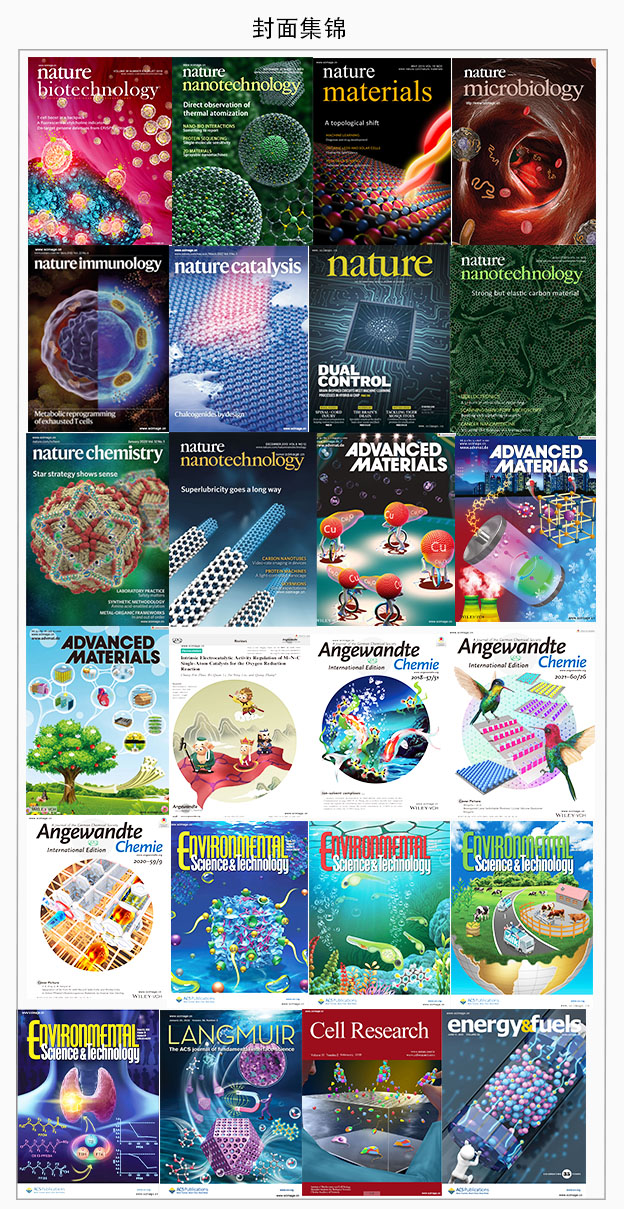博文
2022年12月嘲风作品集(一)
||

▲ Vol 38 Issue 12 | December , 2022
Optogenetics for transcriptional programming and genetic engineering
Tien-Hung Lan, Lian He, Yun Huang, Yubin Zhou
Optogenetics combines genetics and biophotonics to enable noninvasive control of biological processes with high spatiotemporal precision. When engineered into protein machineries that govern the cellular information flow as depicted in the central dogma, multiple genetically encoded non-opsin photosensory modules have been harnessed to modulate gene transcription, DNA or RNA modifications, DNA recombination, and genome engineering by utilizing photons emitting in the wide range of 200–1000 nm. We present herein generally applicable modular strategies for optogenetic engineering and highlight latest advances in the broad applications of opsin-free optogenetics to program transcriptional outputs and precisely manipulate the mammalian genome, epigenome, and epitranscriptome. We also discuss current challenges and future trends in opsin-free optogenetics, which has been rapidly evolving to meet the growing needs in synthetic biology and genetics research.
https://www.sciencedirect.com/science/article/pii/S0168952522001408

▲ Vol 04 Issue 04 | December , 2022
Engineering layered/spinel heterostructure via molybdenum doping towards highly stable Li-rich cathodes
Kun-Qi Geng, Meng-Qian Yang, Jun-Xia Meng, Ling-Fei Zhou, Yu-Qin Wang, Sydorov Dmytro, Qian Zhang, Sheng-Wen Zhong & Quan-Xin Ma
Li-rich layered oxide (LLO), e.g., Li1.12[Mn0.56Ni0.16Co0.08]O2 (LRMO), is considered as a promising cathode material due to its superior Li-storage capability. However, the poor cycling stability and large voltage decay, which are related to the phase transition, limit its industrialization process. Herein, a Mo-doped LRMO (Li1.12[Mn0.56Ni0.16Co0.08]0.98Mo0.02O2, LRMO-Mo2.0%) was successfully synthesized via a simple combination of co-precipitation with high-temperature calcination for solving the mentioned above- disadvantages. Compared with the pristine counterpart, the as-prepared LRMO-Mo2.0% shows more excellent electrochemical performance in terms of rate capability (reversible capacity of 118 mA·h·g−1 at 5 C), cyclic ability (94.3% capacity retention after 100 cycles at 0.2 C) and discharge midpoint voltage decay (0.11 V after 100 cycles). Systematic investigation of structural evolution and electrochemical kinetics elucidate that the synergic effect of robust oxygen framework and layered/spinel heterostructure is the key to its performance improvement. Such synergy helps to stabilize the layered structure by curbing the structural transformation and oxygen escaping during the electrochemical cycling. This work paved the way for the simple and efficient preparation of highly stable LLO cathode materials.
https://link.springer.com/journal/42864/volumes-and-issues/4-4

▲ Vol 07 Issue 12 | December , 2022
COx conversion to aromatics: a mini-review of nanoscale performance
Guo Tian, Chenxi Zhang and Fei Wei
The conversion of COx into value-added green aromatics is considered as a promising route to achieve the world's decarbonization due to its considerable thermodynamic driving force and atomic economy where low H/C ratio aromatics are chosen as a product. It is enabled by bifunctional nano-catalysts composed of metal oxides with abundant oxygen vacancies and acid zeolites, thus realizing superior selectivity in hydrocarbons at the single pass of COx conversion. In this mini-review, we mainly provide some thought-provoking insights at the nanoscale of this complicated process including the proximity of active sites, reaction mechanism, asymmetric desorption behavior of intermediates and final products and overall thermodynamic analysis. The facile surface diffusion of intermediates owing to the proximity of active sites stimulates the reaction, which follows an autocatalytic process. This positive feedback attributed to the autocatalytic cycle accelerates the transformation of energy and materials in the thermodynamically optimal direction, making the reaction highly selective towards the final products. This complicated coupling process, like a nano-maze constituted by these micro-environment factors, is complicated in terms of the reaction pathway but highly selective to a fixed direction guided by overall thermodynamics. Deep understanding of such an autocatalytic cycle at the nanoscale paves the way for the rational design of next-generation high-performance catalysts.
https://pubs.rsc.org/en/content/articlelanding/2022/nh/d2nh00307d

▲ Vol 24 Issue 12 | December , 2022
Real-time measurements of product compounds formed through the reaction of ozone with breath exhaled VOCs
Xin Xu, Hongwei Pang, Chao Liu, Kangyi Wang, Gwendal Loisel, Lei Li, Sasho Gligorovski and Xue Li
Human presence can affect indoor air quality because of secondary organic compounds formed upon reactions between gaseous oxidant species, e.g., ozone (O3), hydroxyl radicals (OH), and chemical compounds from skin, exhaled breath, hair and clothes. We assess the gas-phase product compounds generated by reactions of gaseous O3 with volatile organic compounds (VOCs) from exhaled human breath by real time analysis using a high-resolution quadrupole-orbitrap mass spectrometer (HRMS) coupled to a secondary electrospray ionization (SESI) source. Based on the product compounds identified we propose a reaction mechanism initiated by O3 oxidation of the most common breath constituents, isoprene, α-terpinene and ammonia (NH3). The reaction of O3 with isoprene and α-terpinene generates ketones and aldehydes such as 3,4-dihydroxy-2-butanone, methyl vinyl ketone, 3-carbonyl butyraldehyde, formaldehyde and toxic compounds such as 3-methyl furan. Formation of compounds with reduced nitrogen containing functional groups such as amines, imines and imides is highly plausible through NH3 initiated cleavage of the C–O bond. The detected gas-phase product compounds suggest that human breath can additionally affect indoor air quality through the formation of harmful secondary products and future epidemiological studies should evaluate the potential health effects of these compounds.
https://pubs.rsc.org/en/content/articlelanding/2022/em/d2em00339b

▲ Vol 09 Issue 12 | December 01, 2022
Single and combined exposure to micro(nano)plastics and azithromycin disturbing the photosynthetic carbon fixation of Synechocystis sp.
Xiuqi You, Mingtao You, Yitao Lyu, Guyu Peng and Weiling Sun
Revealing the ecotoxicity of micro(nano)plastics (MNPs) and azithromycin (AZM) is of great importance regarding their wide occurrence in aquatic environments. Herein, we investigated the toxic effects of MNPs and AZM, alone and in combination, on a cyanobacterium Synechocystis sp. by monitoring physiological and proteomic responses, especially changes of photosynthetic carbon fixation. Although the inhibitory effects of MNPs on cell viability was slight and particle size independent, the antagonistic effects between MNPs and AZM decreased with increasing plastic particle size. Microplastics (MPs) inhibited the electron transport and photosynthetic efficiency, and induced inactivation of carbon-fixing enzymes. Proteomic analysis revealed that MPs disturbed the photosynthetic carbon fixation by inhibiting CO2 uptake, CO2 fixation, and photosynthetic reactions. Compared to MPs, nanoplastics (NPs) interfered less with photosynthetic carbon fixation at both cellular and molecular levels, but they caused more severe membrane destruction. Unlike MNPs, AZM exerted minimal effects on the photosynthetic carbon fixation. The inhibition of photosynthetic carbon fixation decreased upon co-exposure to AZM and NPs, but increased upon co-exposure to AZM and MPs compared to the corresponding single MNP exposure. These findings provide novel insights into the ecotoxicity of MNPs or/and AZM, and highlight the potential for MNPs to disturb the global carbon cycle.
https://pubs.rsc.org/en/content/articlelanding/2022/en/d2en00204c
注:本期封面由嘲风团队创作,点击https://www.scimage.cn官网查看更多科研学术图像设计封面。
<静远嘲风动漫传媒科技中心>设计制作

购书链接:
☆科学的颜值:学术期刊封面故事及图像设计
https://item.jd.com/12802188.html
☆科技绘图/科研论文图/论文配图设计与创作自学手册:CorelDRAW篇
https://item.jd.com/13504674.html
☆科技绘图/科研论文图/论文配图设计与创作自学手册:Maya+PSP篇
https://item.jd.com/13504686.html
☆科技绘图/科研论文图/论文配图设计与创作自学手册:科研动画篇
https://item.jd.com/13048467.html#crumb-wrap


静远嘲风(MY Scimage) 成立于2007年,嘲风取自中国传统文化中龙生九子,子子不同的传说,嘲风为守护屋脊之瑞兽,喜登高望远;静远取自成语“宁静致远”,登高莫忘初心,远观而不可务远。



https://m.sciencenet.cn/blog-519111-1377746.html
上一篇:笨笨的好朋友?我单方面觉得它行。
下一篇:2022年12月嘲风作品集(二)